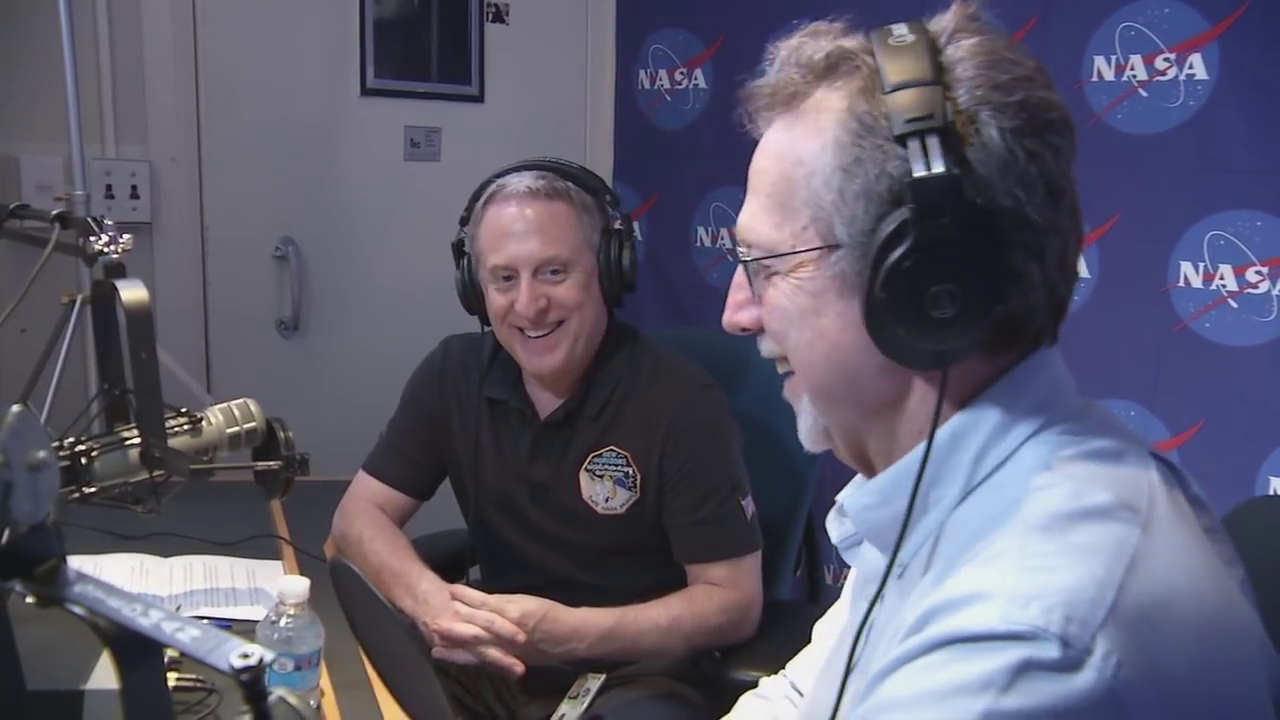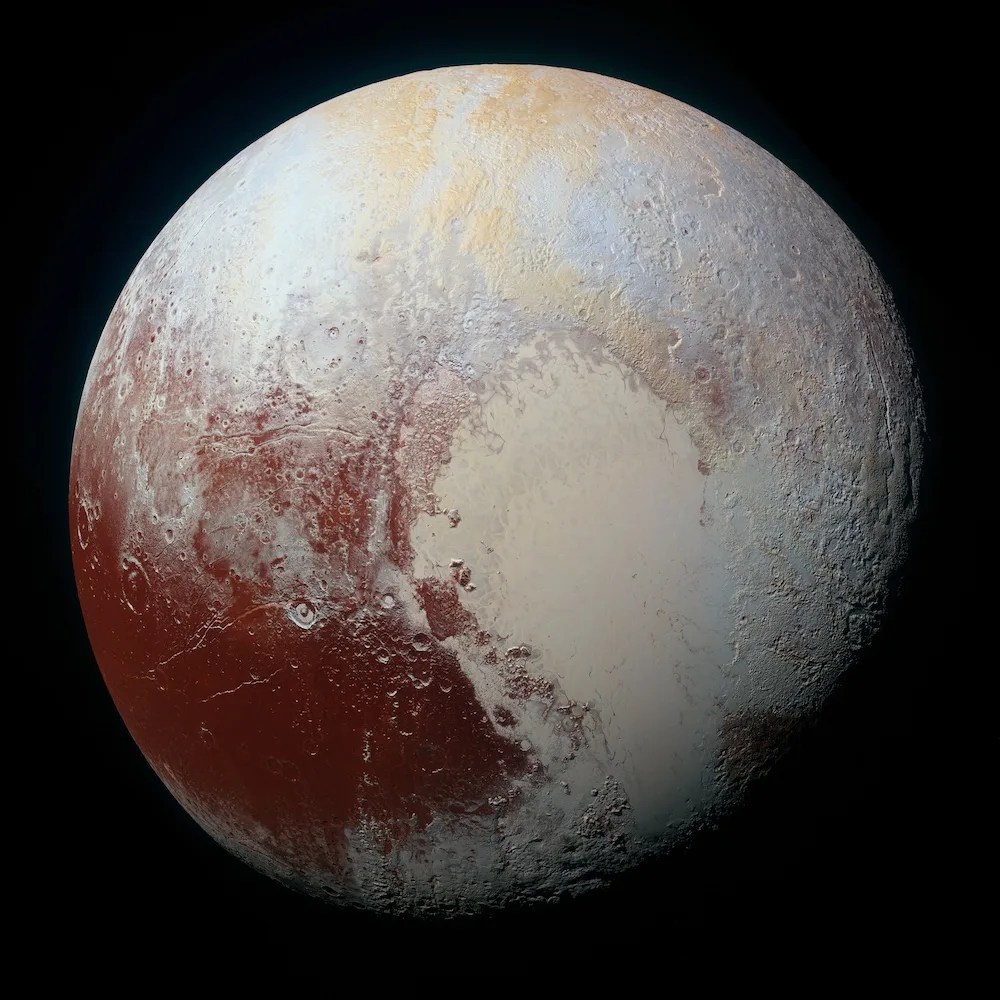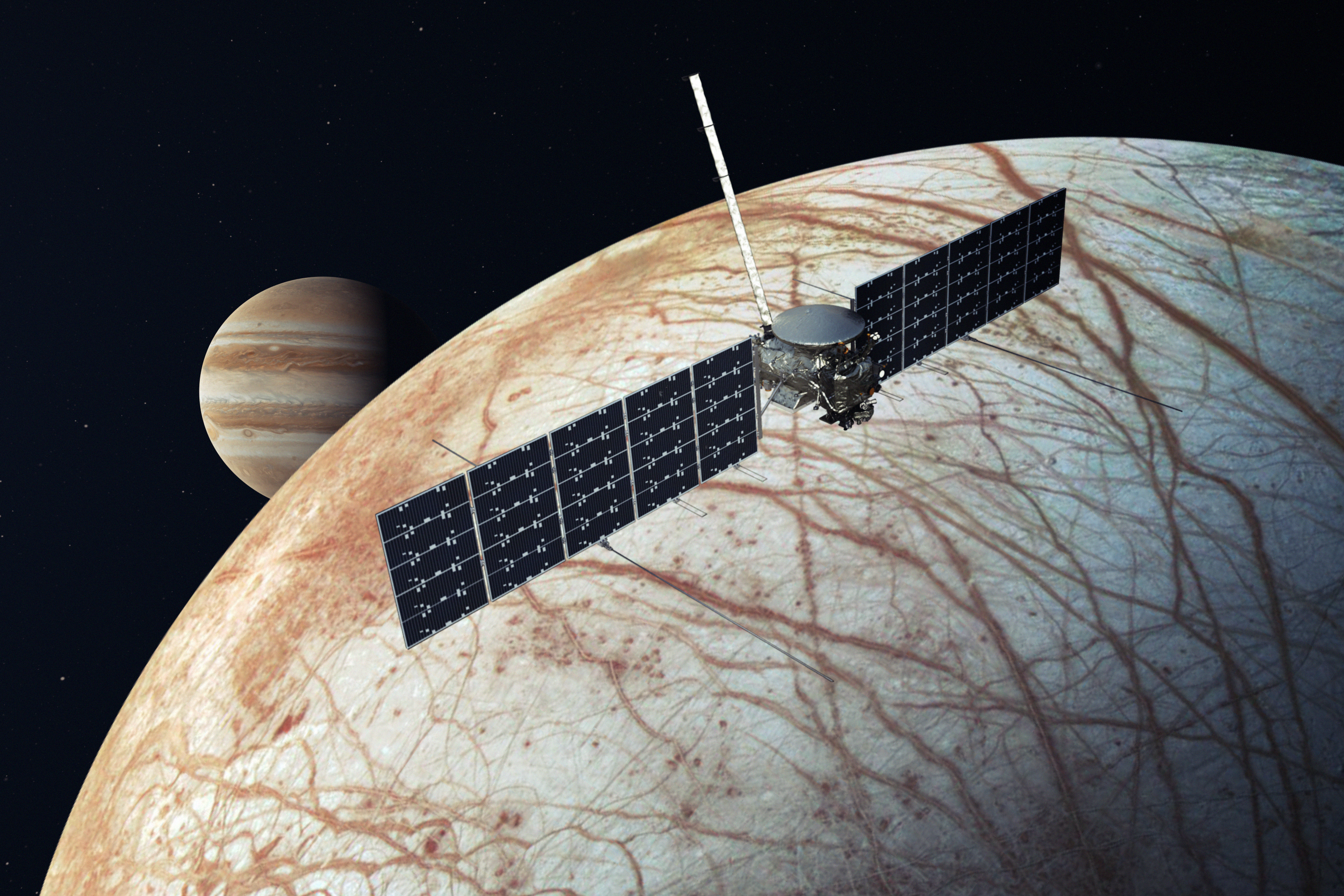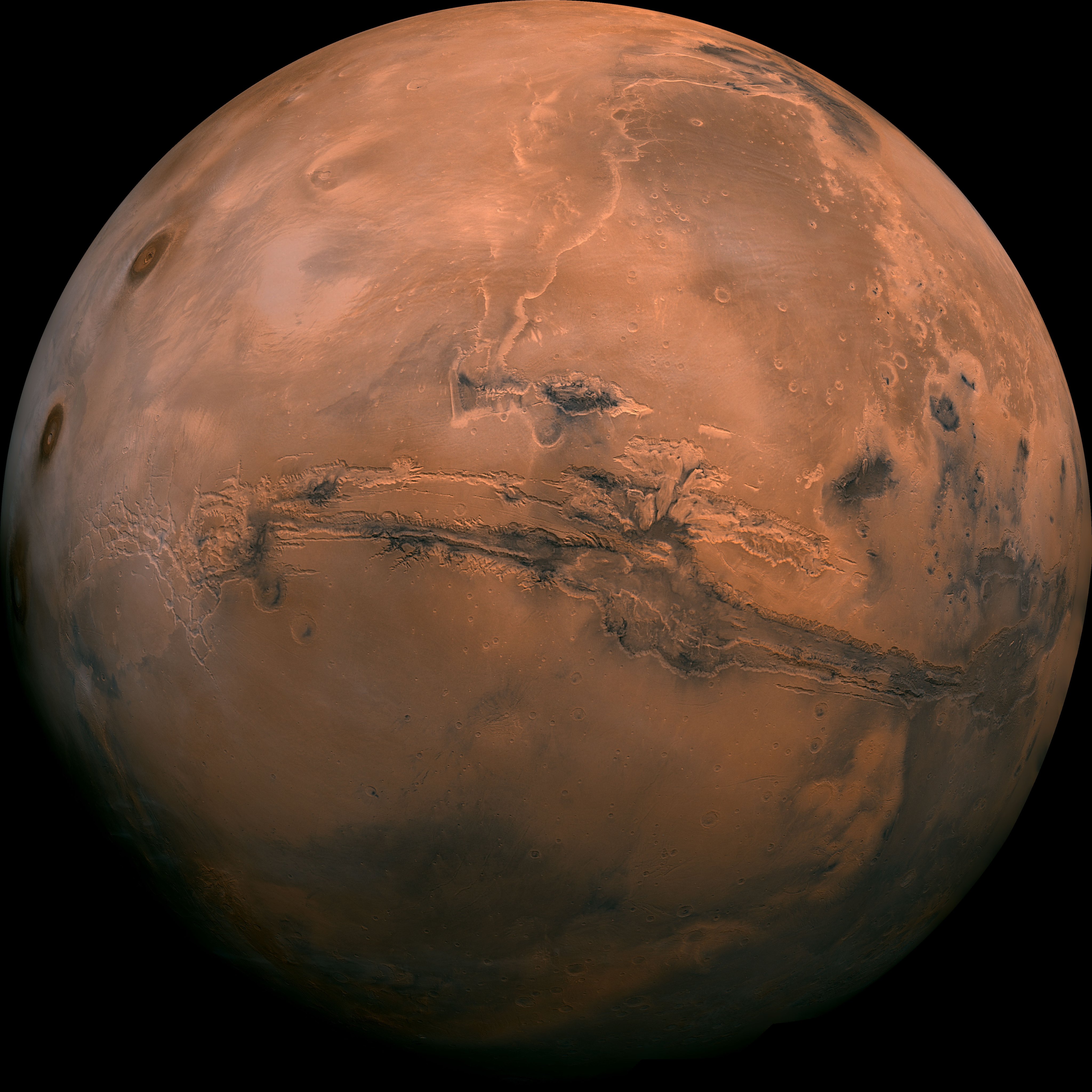18 min read

Pluto -- which is smaller than Earth’s Moon -- has a heart-shaped glacier that’s the size of Texas and Oklahoma. Fascinating Pluto also has blue skies, spinning moons, mountains as high as the Rockies, and it snows—but the snow is red! In this episode of Gravity Assist, Jim Green talks with New Horizons Principal Investigator Alan Stern of the Southwest Research Institute about what the July 2015 flyby of Pluto revealed about this mysterious and diverse world.
TRANSCRIPT:
Jim Green: Our solar system is a wondrous place with a single star, our Sun, and everything that orbits around it, planets, moons, asteroids and comets. What do we know about this beautiful solar system we call home? It’s part of an even larger cosmos with billions of other solar systems. Hi, I’m Jim Green, Director of Planetary Science at NASA, and this is Gravity Assist.
I’m here with Alan Stern, the principal investigator of the New Horizons mission, and it’s all about Pluto today. What an amazing body that has turned out to be. You know, just a matter of a few years ago we knew virtually nothing about Pluto. But in July 2015 New Horizons changed all that and changed everything in our lives in planetary science. What really surprised me is what we found. What were your biggest surprises, Alan?
Alan Stern: You know, I think my two biggest surprises were first, just how utterly amazing Pluto turned out to be—how many different kinds of features were on the surface and even in the atmosphere. There was something for everyone. And the second amazing finding was how many people really wanted to participate in it in the public and just be a part of this exploration. We expected it would be a big response, but it was much bigger than we thought. And even for months -- I would say at least a year afterwards -- there was this completely unparalleled public reaction that our team members would go places; we were getting requests for literally hundreds of public presentations.

Jim Green: Yeah.
Alan Stern: We just couldn’t fulfill it all.
Jim Green: I think some of that is still going on. I mean, you know when I was in Japan just this last week I went to a girls’ school, and they wanted to know about Pluto.
Alan Stern: Yeah?
Jim Green: Yeah.
Alan Stern: Wow. That’s cool.
Jim Green: It really is. I mean you’re right; it’s just absolutely gone international. What really shocked me, actually, was the heart feature, but also the context around it. In a few craters, you know, a body smaller than the Moon, and yet it looked nothing like our Moon, so different.
Alan Stern: Oh, Pluto has its own personality, and the heart is probably one of the biggest parts of that. You know we named that heart Tombaugh Regio after the discoverer of Pluto, Clyde Tombaugh. When we were far away and first training our cameras on the planet in the distance, we were 100 million miles away -- as far as the Earth to the Sun -- and every time that part of Pluto would come into view we could see this bright, massive feature on the surface. And as it got closer and closer it started to take this heart shape, and we decided to run with that and call it Pluto’s heart. And it really does look like a heart.
Jim Green: It really does look like a heart.
Alan Stern: But what it is, is a massive glacier made of nitrogen ice that’s a million square kilometers in scale. It’s the size of Texas and Oklahoma combined. And the glacier is flowing. We see places where there are avalanches onto it and where it runs up against the mountains and subducts under them, and we see where it’s overturning. And there’s not a single crater we can find there, which means this massive piece of real estate was born yesterday geologically. It’s amazing.
Jim Green: Yeah, it really is amazing. The other thing that I really liked about the heart that you guys have found out is it’s a planitia. That means it’s a lower area. So that has led you to some really neat ideas as to how that came about.
Alan Stern: Yeah, you know, the whole planitia is surrounded by soaring mountains that are four or five kilometers tall, as tall as the Rockies. And it looks like they were uplifted in a gigantic impact onto the surface of Pluto that formed a big basin, as I said, about 1 million kilometers in scale -- 1,000 kilometers in every direction -- that dug this big hole out. And then that hole became a cold trap for snows. Primarily the atmosphere is made of nitrogen, so that’s what snows the most. And it’s filled up over time just like you would be filling up a bathtub. But our mathematical models show that as Pluto goes around its orbit, and then as it has these longer seasonal cycles, the amount of nitrogen in the basin can actually ebb and flow back and forth thousands of times over billions of years where this, if you will, the sea level of the nitrogen -- of course it’s frozen -- but the sea level can rise and fall by thousands of feet.
Jim Green: Well, is that due to its interaction with the atmosphere?
Alan Stern: Yes. As the sunlight, the amount of sunlight on its surface changes with either where Pluto is in its elliptical orbit or how it’s pole is tilted over time, as that varies, you get more or less heating into the basin. And that can either drive condensation flow in to fill it up, or what’s called the sublimation, kind of an evaporation process, that can draw it down.
Jim Green: Well, you know the haze on Pluto was really fantastic, and it’s really quite structured. So that also just blew me away that, you know, such a beautifully small body has such a beautiful atmosphere associated with it. And what I mean by small, I mean you know it’s just smaller than the Moon, but yet it’s so dynamic. It’s got almost everything a planet ever wanted to have.
Alan Stern: Yeah, I think it shows that small planets can be as interesting as big planets.
Jim Green: Yeah.
Alan Stern: You know, we expected that haze for decades. There were hints of it in ground-based data, and you look at artist conceptions of Pluto and they’ll often show a low-lying kind of haze layer towards the surface. But what we found was a soaring structure with dozens of layers that stretch up literally half a million feet into Pluto’s sky. And when we took color pictures of it it’s blue. So there aren’t many places with blue skies. Earth is one of them; Pluto is another. And that, along with the structure and all the fine layering in the haze really caught us by surprise.
Jim Green: I think the blue light is being backlit, but what’s happening in the atmosphere is quite a chemical reaction going on interacting with the solar wind, but also with the UV light, and then complex carbon molecules are coming together and creating what are called the tholins. So that’s my understanding of what’s happening, and those are red.
Alan Stern: Yeah, that’s spot on. And that’s what is probably silting out onto the surface of Pluto and making the surface red. The reason the atmosphere -- you know, the Earth’s atmosphere is blue, but the air isn’t blue. It’s that the scattering properties of the molecules create a blueness through a process called Rayleigh scattering that Lord Rayleigh figured out almost 200 years ago as an early atmospheric scientist and physicist. And Pluto --
Jim Green: Yeah, it lets the red through, but the blue gets -- the blue wavelengths get scattered.
Alan Stern: They get scattered much more efficiently.
Jim Green: Right.
Alan Stern: And so the red passes through, and the blue is what gets scattered around. It’s what paints the color of the atmosphere, if you will, even though the air itself is colorless, the actual molecules. And the same is true in a body of water. The same kind of process makes the ocean blue or a swimming pool blue. In Pluto’s case it’s different. It’s the fine suspended particles which themselves, even though they are red, the way they interact with sunlight through a different process discovered by a different physicist called Mie scattering, generates the blue color. And as you say, it’s primarily forward-scattering effect, so you see it from the far side of Pluto looking back when sunlight is filtering through the atmosphere. But if you were an astronaut and you were there, it would literally appear blue just like the Earth’s atmosphere.
Jim Green: What I really like, too, is the analogy of standing in some places on Pluto and it’s snowing red.
Alan Stern: It’s red snow.
Jim Green: Red snow, wow.
Alan Stern: Yeah, that’s a sci-fi planet for you.
Jim Green: Yeah, it really is. Yeah, that’s fantastic. So you had been thinking about going to Pluto for quite a while, and you were, I have to admit, the driving force that really made that happen.
Alan Stern: Well, a lot of people worked on it.
Jim Green: Well, I know, but I don’t know we’d be there without you. I’ve got to tell you that right now. I’m sure you’d say it’s all worth it. But it takes quite a toll because it takes an enormous amount of energy and an enormous amount of concentration to pull off.
Alan Stern: It does, and it took a toll on our families. I think for many of us, you know, we signed up for nights and weekends, and long hours, and lots of travel. And for kids and partners and spouses and relatives, you know, you’re absentee a lot. But I think it was well worth it, and I wouldn’t trade it. I would do it again in a minute. I think we really did something good for science, and we did something good for exploration, and we inspired a lot of people. And you can’t help but be proud of that.
Jim Green: Yeah, well, you did something for the nation and NASA. That’s for sure. It’s so exciting. You know, there’s the thinking now, I believe, has started that will end up in this next decadal. You know, we have our decadals that come out by the National Academy (of Sciences) in terms of what are the next steps where some consideration’s got to be made about going back to Pluto and Charon. What’re your thoughts on that? How can we possibly pull that off?
Alan Stern: Well, I think we know how to do it from a technology standpoint, and there are studies going on where I work at the Southwest Research Institute that are funded by internal research funds to get a head start on that, at Goddard Space Flight Center, at NIAC and some other places. NIAC is doing some studies. And it’s clear that we have the technology to put an orbiter around Pluto and even to fly it there about as fast or maybe even faster with the SLS (Space Launch System) than you could go with New Horizons.
And the interesting thing is that we’ve learned from these studies that the big satellite, Charon, can play the same role at Pluto that Titan did for Cassini. It’s your motorboat that lets you tour the system by gravity assists so you can visit all the small satellites and go out in the tail, the plasma tail, and dip down into the atmosphere with a mass spec(trometer) and do all these things virtually for free in terms of fuel because Charon is giving you gravity assist, after gravity assist, after gravity assist.
Jim Green:
Well, I really like that concept already. I can tell you that. But Charon also is pretty spectacular. You know, it’s very different than Pluto in terms of its color and a variety of features. What did you think about that when you saw it?
Alan Stern: Well, we knew the two would be different. From all the ground-based data we could see that Pluto had more personality, if you will, that it had brighter colors and more reflective surface and much more varied bright and dark areas as it rotates. But Charon’s got its own personality, and it’s got some really unique features that we don’t see anywhere else in the solar system. This vast canyon across the equator that stretches for more than 1,000 miles is probably the result of the freezing of an interior ocean early after its formation as it went from a hot interior liquid to a solid, cooled-off interior. And it’s got this tremendous science-fiction polar cap, which is this big red polar cap, like something somebody would dream up, not that would actually happen. And it turns out the polar cap is made of stuff from Pluto that’s flowing across space in between them and sticking to Charon’s surface at the poles where it’s coldest, and turning red for the same reason those tholins on the surface of Pluto are red. So Charon’s got a lot to teach us, as well.
Jim Green: In addition to Charon, Pluto’s got some other spectacular moons, and they’re spinning, and they’re not all tidally-locked, which was also quite a surprise. What’s that all about?
Alan Stern: Well, if I knew I would go out and write a paper. So we sort of understand the problem. You know that’s the first thing is, you know, first you have to admit there’s a problem, and then you can start to cope with it. And, really, we expected the small satellites would tidally spin down and behave like normal satellites of a giant planet, but it looks like the Pluto-Charon binary, being a binary and being so unusual in that it’s got a lumpy gravitational field because you’ve got two masses there, create these kicks and bumps as the small satellites orbit that keep working against the tidal forces that would tamp down their rotational periods. Instead it excites them. It gives them kicks. And you’ve got -- take Hydra. Hydra’s the farthest out, and it’s tumbling almost 100 times for every time it rolls around Pluto once in its orbit. It’s like a football. It’s just tumbling and tumbling and tumbling every 10 hours.
Jim Green: When I first saw that I thought well, this must have been some sort of recent impact that has done that and it hasn’t quite slowed down. But then when many of the other moons also didn’t show that tidally-locked position, then you’re right; something else has to explain that.
Alan Stern: Yeah, and a lot of people thought what you just said, that it must be evidence for a recent impact, and yet, as you say, because all four are doing it that’s too improbable. But also some people thought that maybe the system had just formed. But when our crater counters did the work to determine the surface ages -- because the more craters the longer it’s been out in the rain of impactors -- they got an age of billions of years old for the small satellites, just as old as Charon, which meant that they were all formed together and very, very long ago. And something else is going on to make those unusual spin rates.
Jim Green: Well the other part to that, too, is there doesn’t look like there’s any debris laying around. So if there was a recent impact where did all the debris go?
Alan Stern: Exactly. The system is clean as a whistle.
Jim Green: Yeah.
Alan Stern: Yeah, I lost a bet on that.
Jim Green: Well, you know, one of the things that I always like to do with my guests is really talk about how they got into that field, how they really got excited about what they’re doing and the drive that they obtained. So Alan, what was your gravity assist that made that happen for you?
Alan Stern: Gosh, there are probably a lot, but one that comes to mind right away is my dad, who was not in the space business, not in the science business, he was in sales and management, and one day he came home from a business trip with his little handheld voice recorder, and he said guess who I sat next to on this airplane, Apollo astronaut, Wally Schirra. And he left a message for you. And then my dad played this, and there was Wally Schirra, pretty much saying, “Hey, Alan, I understand you live in Dallas and you’re interested in science, and you study hard and you know you can do anything you want. You can come be an astronaut like I am, or be a scientist, or an engineer, whatever you want to work on. Go get ’em. I hope I meet you someday.” And wow, for a 9- or 10-year-old kid, boy that was a gravity assist.
Jim Green: No kidding. That sounds fantastic.
Alan Stern: It’s true.
Jim Green: Did you ever get back and meet Wally?
Alan Stern: I never did meet him. I’ve met quite a number of the Apollo astronauts, but I don’t know if the tape still works, but I know we still have that little handheld recorder. I wouldn’t let my dad throw it away. I’m sure it’s in my parents’ attic somewhere.
Jim Green: New Horizons now past Pluto, and it’s heading out in the Kuiper Belt. What’s next for it?
Alan Stern: Well, the best-kept secret about New Horizons is we’re using the telescopes on board as an observatory actually in the Kuiper Belt. We just woke the spacecraft up in September, and all the way through the end of the year it’s observing small planets and even smaller Kuiper Belt objects across our trajectory. (Editor’s note: The spacecraft has now returned to hibernation until June 4, 2018.) And then the end of 2018 we’re going to -- we’re bearing down on our next flyby a billion miles beyond Pluto of one of the building blocks of these planets like Pluto. It’s an object that doesn’t have a name yet, just a license plate, 2014 MU69. But it’s probably the most pristine relic of the formation of the solar system ever to be explored. It’s been out in that -400° deep-freeze for 4 billion years, and we’ve never been to anything like that before. We don’t quite know what to expect. It’s a little bit like Pluto in that regard. I’m sure we’ll see some surprises. And it all happens at the holidays in 2018. So you can spend your Christmas in the Kuiper Belt and your New Year’s Eve with NASA. The flyby is actually on New Year’s Eve and New Year’s Day turning 2019. And New Horizons is in spectacularly healthy shape and ready to go back in the ring for the next round.
Jim Green: I know where I’ll be during that time period. That’s for darned sure. Well, it’s been just a delight to chat with you, but I’ve got to tell you we’re going to have you back. Our next podcast we want to talk about the Kuiper Belt, going well beyond Pluto and into the solar system deeper and deeper.
Join us next time as we continue our virtual tour of the solar system. I’m Jim Green, and this is your Gravity Assist.
Follow NASA’s New Horizons mission at: https://www.nasa.gov/mission_pages/newhorizons and
and on Twitter: @NASANewHorizons and @NewHorizons2015
Love NASA science? Follow NASA’s Science Chief Thomas Zurbuchen on Twitter using @Dr_ThomasZ and check out #ScienceInSeconds for short videos.
And sure to listen to these NASA podcasts: “Houston: We Have a Podcast” from Johnson Space Center, Houston, and “NASA in Silicon Valley” from Ames Research Center in Moffett Field, California.







